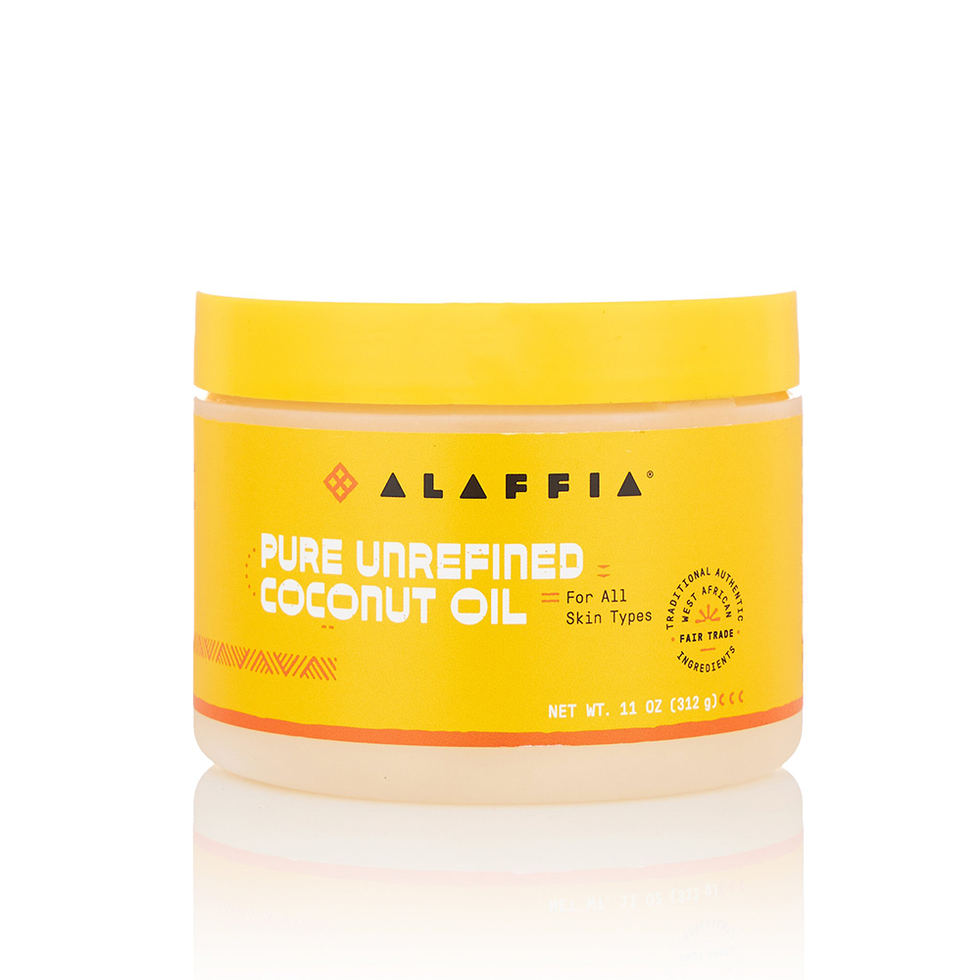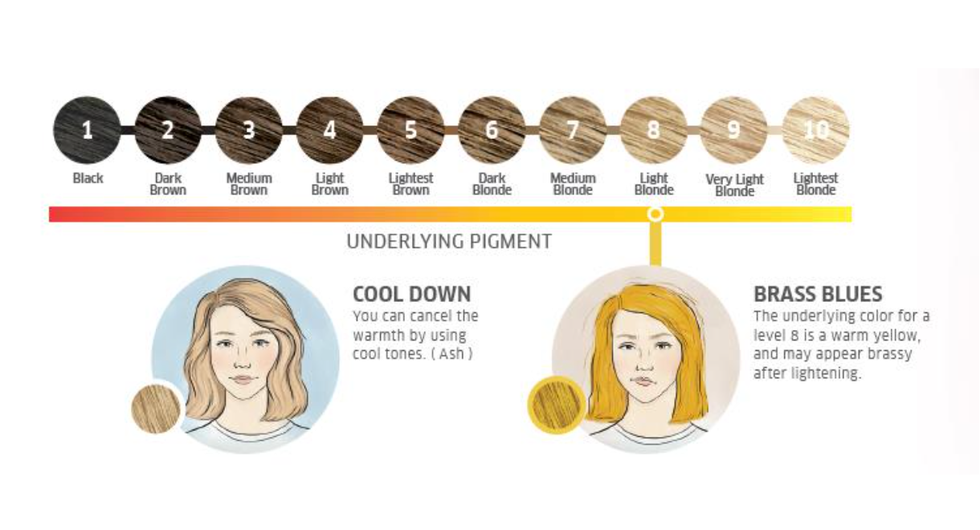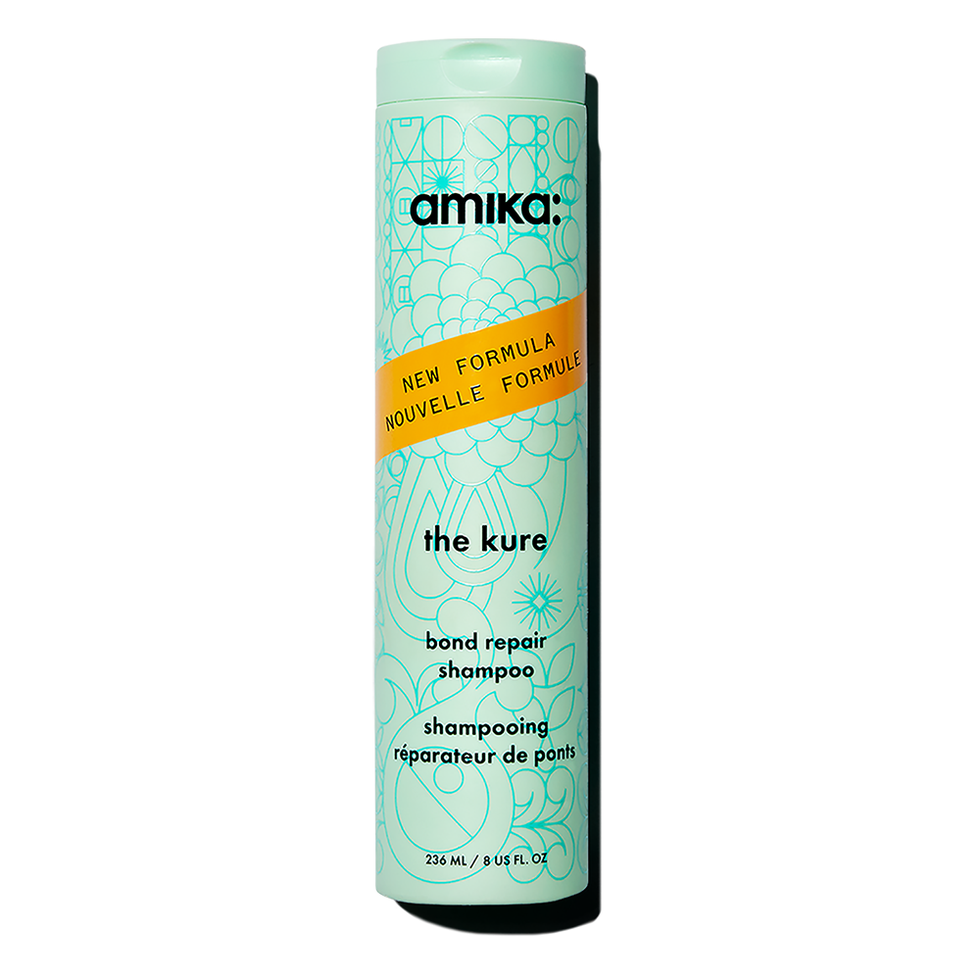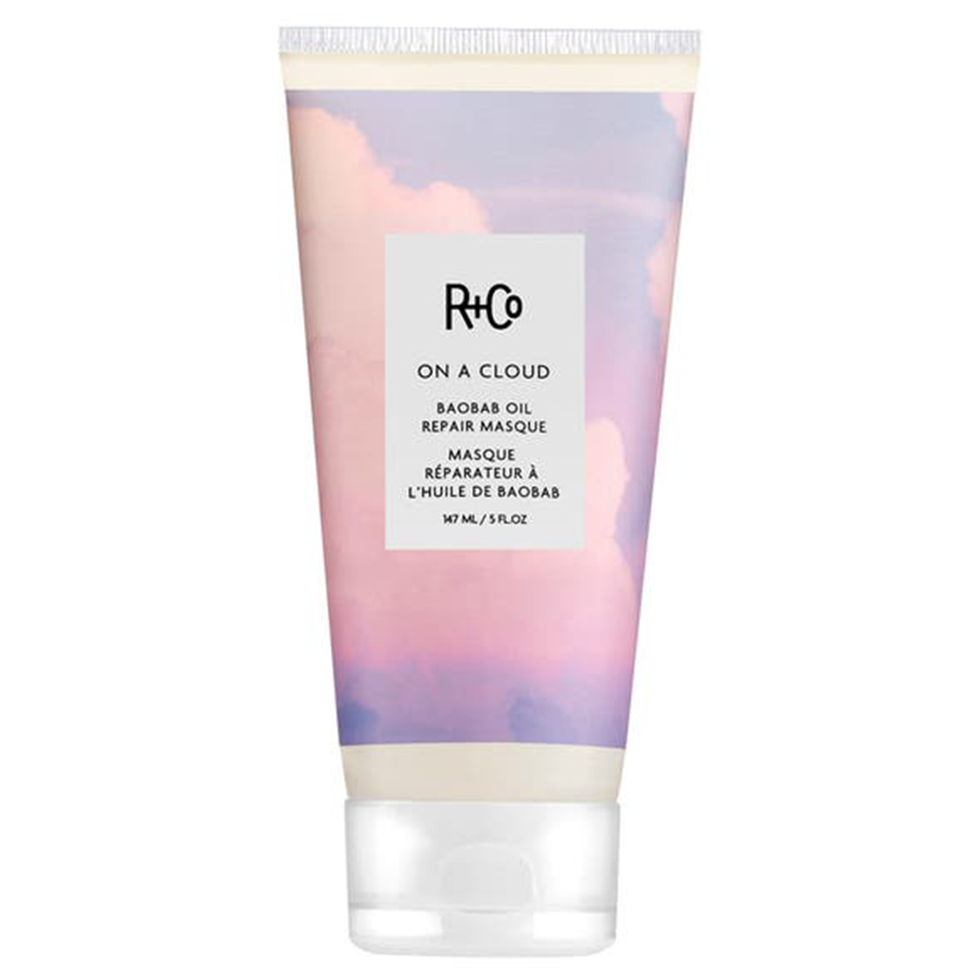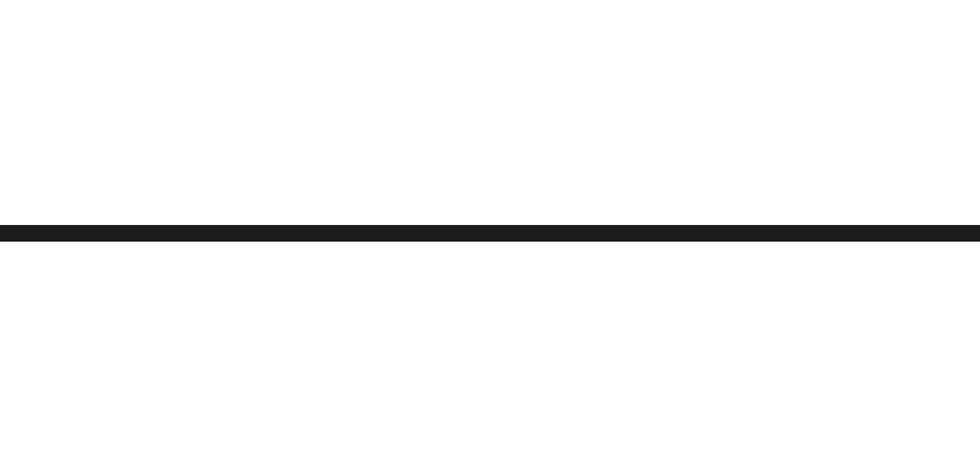Products You May Like
So, you’ve decided to switch up your look and go full-fledged blonde, now what? For one, you could book a professional hair appointment— which honestly might be the most sensible solution. However, if you’re trying to save a few coins or if you simply don’t have time to spend all day in a salon chair, perhaps you’ve come to the conclusion that bleaching your hair at home is the only option left.
Although you’re probably aware of this, we feel compelled to remind you that there are a few caveats that come along with DIY bleaching. Since bleach is a harsh chemical, you could run the risk of irritating your scalp or damaging your hair strands, so it’s essential to take all the necessary precautions to ensure that you’re prioritizing the health of your hair.
To make your at-home bleach journey a bit easier, we’ve consulted a few experts to help you achieve healthy-looking blonde strands. Ahead, you’ll notice a 12-step bleaching process, along with tips and tricks from hair colorist and R+ Co Collective member Richy Kandasamy and Wella Colorcharm and Clairol Professional Top Artist Oliver Adams. We’ve also made sure to feature a number of hair care products that you’ll need in the process, including bleaching kits, shampoos, and leave-in creams.
Let’s go blonde!
Step 1: Check your situation
How does your hair feel? Can it truly handle the damage that you’re about to do to it? Kandasamy recommends beginning with a test. “Conduct an elasticity strand test,” he says. “Spray some water on a piece of hair, and let it absorb—stretch the wet hair very gently. If the wet hair stretches more than usual, or the texture turns a bit gummy, it is not safe to dye, if the hair goes back to its natural state, it’s in good condition to bleach.” He also recommends doing a patch test with a bleach mixture to see how your hair will react using the same method afterward with the small area of processed hair.
Additionally, it’s important to understand your current hair color situation. If your hair is already processed, if you have used any type of box dye, or if you have virgin, unprocessed hair, these can cause variations in how your hair will lift with the bleach.
Step 2: Gather your materials
You’re going to need a few items in your tool kit before you begin.
- Developer (30v and 20v): This is the liquid base to your bleach (and toner) mixture, when combined it creates what we all know to be bleach.
- Lightener: Usually found in a powder form, this is the second part to a bleach mixture that causes the actual lightening in the hair.
- Purple Shampoo: This will help tone the brassiness in your hair and neutralize unwanted yellow and orange hues.
- Toner: Like purple shampoos, these will neutralize brassy hair on a chemical level.
- Mixing bowl, Gloves, Brush
- Plastic bag/shower cap
Step 3: Prep! Prep! Prep!
When beginning to prep your hair Kandasamy recommends sectioning your hair in four parts. For added protection, rub coconut oil from the root to tip within sectioned hair to hydrate hair. “Using coconut oil before lightening hair can be very beneficial for the condition of the hair,” adds Kandasamy. “You want it to absorb into your hair for at least one hour, even longer if possible and then you can pre-light or bleach.”
Step 4: Mixing the product
Once all the necessary materials and prep have been done (and you’ve fully committed to going blonde) you’re ready to make the bleach mixture.
- Read the directions on your lightener and developer materials, not all brands are the same, but most bleach mix calls for a 2:1 ratio (meaning two parts developer to one part lightener).
- Don’t eyeball–proper portions are important, so measure properly! Depending on how much you’re trying to bleach, you might need more mixture as you go, but start with 2 oz of a 30v developer and 1 oz of lightener, add the ingredients to your mixing bowl and combine them together using the painting brush until smooth.
- Kandasamy recommends using one bleach mixture with a 30v developer for the length of the hair and then another bleach mixture with a 20v developer for the roots.
Step 5: Application (no turning back now)
For each of the sections that you’ve divided, you’ll follow the below instructions. Kandasamy and Adams both suggest taking small portions within the sections of your hair and saturating the strands to make sure the hair is completely covered.
“Apply the bleach with 30 volume to mid-length and ends about two inches away from the scalp,” says Kandasamy. “Then, right after, I’d apply the bleach with 20 volume on the roots.” This is the best method to use to avoid hot roots.
Adams explains that hot roots are what happens when you apply bleach to the hair (from root to tip) at once and after processing the roots become a much lighter blonde shade compared to the yellow hair of the length.
“The hair closest to the scalp processes color quicker than anywhere else on the hair shaft because the natural heat from the body acts as a heater when hair color is applied,” he explains. “This means that when you are doing a virgin application, [treating] hair that hasn’t been color-treated, you must apply the color on the roots last, not first.”
Kandasamy also recommends making sure you use enough bleach mixture on your strands. Once the mixture has been applied, just pop on a shower cap or plastic bag and set your timer.
Step 6: Now you wait
Okay, let’s talk hair levels and wait time. “Processing time depends on the manufacturer recommendation and also the natural level of starting point and end result desired,” says Kandasamy.
It might be confusing, but like Kandasamy said, it’s important to understand what hair level (shade) you’re starting with and what color you want to achieve to figure out how long the bleach mixture should stay on your head. This chart from Wella shows exactly what a hair level is.
“The level system for hair tells you how light or dark your color is going to be, one is the darkest and 10 is the lightest.” Adams explains. “It’s important to understand that all blondes must be at least level seven or above, so if you are starting at a level one, you have to lift your hair six levels to even begin to see any type of blonde.”
Once you figure out your hair level and how light you want it, you can determine the wait time. If you want your hair to lift as light as possible, then leave the mixture on for 35-4o minutes (remember to never exceed 45 minutes). Adams recommends checking your hair to see if it’s lifted to the level you desire and says, “you wouldn’t want to lift hair from one to seven if you only need to lift it to four or five.”
Step 7: Wash it
When it’s fully processed, it’s time to wash it out. Use lukewarm water, too hot or cold of water can shock your hair in its already fragile state. Make sure to completely rinse out the bleach and gently wash your hair to get out all the product.
Step 8: Assess and bleach again (if needed)
Don’t freak out! Your hair may look yellow or orange even and that’s okay, it just means you might have to bleach again. Make sure you assess and check the health of your hair using the stretch technique Kandasamy recommended in the first step. Using the hair level chart discussed in Step 6, determine your hair level to see if you need to bleach your hair again. If you do need to bleach again, follow steps three to seven again (your hair needs to be dry).
Most importantly, make sure to give your hair enough recovery time and consider waiting a couple of days, weeks, or even months before attempting another bleach treatment. You might not achieve your desired results on the first try so it’s important to be patient. Adding excessive amounts of bleach to your hair can lead to something called over-processing, which is when your hair shaft becomes brittle and damaged. Over-processing can also cause breakage and hair loss which is the last thing you want to deal with, so make sure that you’re treating your hair with care.
Step 9: Time to tone
Remember the color wheel from elementary school? This is where that comes into play. Toner will help neutralize any brassiness or yellow hues that will be lingering in your hair after bleaching.
Before you can tone, just make sure that your hair is light enough (remember the chart in Step 6). “It is important to understand that if the hair hasn’t been lifted light enough or to the proper level, putting a toner on it is not going to fix the problem and could possibly create a very unpleasant color,” Adams says. So always make sure you are using toner on the correct [hair] level.”
Toner can be applied to slightly damp hair and uses the same 2:1 mixing ratio and application method as the bleach.
- Use one part toner to two parts 20v developer: Mix using the same method in Step 4 with the same measurements as your bleach mixture. If you used 2oz of a developer to 1oz of a lightener do the same proportions for the toner: 2oz of 20v developer to 1oz of toner.
- Make sure to use gloves and apply the mixture to sectioned hair: Similar to the bleaching application method, you’ll want to section your hair and saturate the strands with the product; mid-lengths first and then roots.
- The toner and mixture will turn purple and that’s normal: The purple means the toner is activating to eliminate the yellow/orange tones in the hair.
- Wait for the toner to process: Let the toner sit on your hair for 20-25 minutes or according to the time recommendation on the label. You don’t want to leave it on for too long because it can tint your hair purple.
- Wash and Shampoo: Rinse your hair with lukewarm water and gently follow up with a shampoo and conditioner.
Step 10: Invest in a purple shampoo/mask
Similar to the toner, a purple shampoo helps eliminate orange or yellow hues in your hair. Using a non-chemical toner (purple shampoo) is a great way to upkeep your blonde hair to keep it from getting brassy. Use a purple shampoo once or week or whenever your hair starts to get too yellow.
My personal favorite is the Matrix Total Results Brass Off, but there are tons of great purple shampoos to choose from.
Step 11: Repair
After all the chemical damage you just did to your hair, it’s important to replenish those strands. “My best advice is to always use a professional haircare product once or twice a week, [like] a hydrating hair mask,” says Kandasamy. Also, according to Adams you should avoid using heat on your hair:“You will want to minimize thermal heat like excessive blow-drying and ceramic heat styling in the 3-4 weeks after bleaching your hair.”
Step 12: Live your best blonde life
At this point you’re blonde! Since this is an at-home hair job, it might look different than what you thought, but embrace that you did it by yourself and rock it with pride! In case you’re still nervous or unsure, here’s a round-up of YouTube videos that can help you on your blonde journey.
Meet The Experts
Richy Kandasamy is a hair colorist and a R+Co Collective Member.
Oliver Adams is a hair colorist and a top artist for both Wella Colorcharm and Clairol Professional.
Why Trust ELLE Beauty?
As a leading publisher of fashion, lifestyle, and beauty content, ELLE.com is committed to highlighting the best products in various categories by personally testing the latest and most innovative products, interviewing countless experts, and vetting customer-loved items. For this piece, an ELLE.com editor spoke to two hair colorists to discover the safest way to bleach hair at home.

Alexis Gaskin is the Freelance Beauty Assistant for Elle Mag. A proud fat gal, she works to amplify fat voices everywhere and wants to see everyone embrace their inner and outer beauty. She is easily distracted by all things that sparkle, her curly hair and Harry Styles content!

